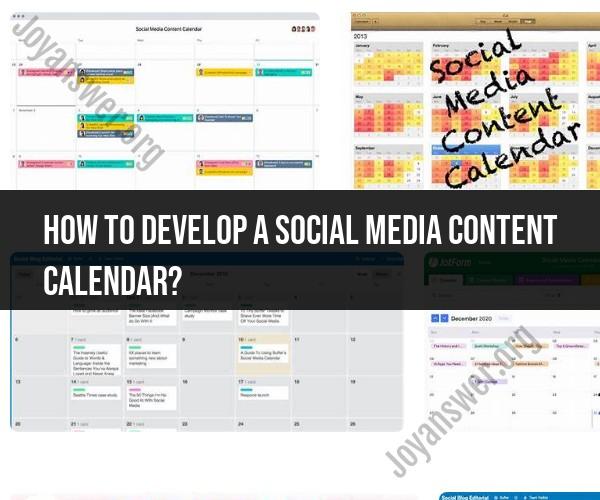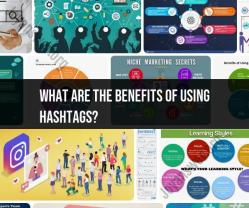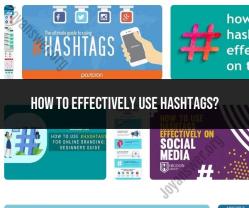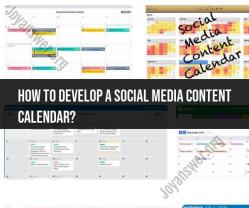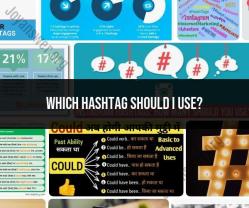How to develop a social media content calendar?
Developing a social media content calendar is a strategic process that can help you stay organized, maintain consistency, and achieve your social media marketing goals. Here are some tips and strategies to help you develop an effective social media content calendar:
1. Define Your Goals:
- Start by clearly defining your social media marketing objectives. Are you looking to increase brand awareness, drive website traffic, generate leads, or boost engagement? Your goals will shape your content strategy.
2. Know Your Audience:
- Understand your target audience's demographics, interests, and behaviors. This information will help you create content that resonates with them.
3. Choose the Right Platforms:
- Select the social media platforms that are most relevant to your audience and goals. Focus on where your target audience is most active.
4. Create a Content Strategy:
- Develop a content strategy that outlines your messaging, content themes, and posting frequency. Consider the types of content you'll create, such as blog posts, videos, infographics, or user-generated content.
5. Set a Content Calendar Template:
- Use a spreadsheet or a dedicated social media management tool to create your content calendar.
- Create columns for the date, platform, content type, captions, hashtags, and any links or multimedia assets.
6. Identify Key Dates and Events:
- Incorporate important dates, holidays, industry events, product launches, and other relevant occasions into your content calendar.
7. Determine Posting Frequency:
- Decide how often you'll post on each platform. Consistency is key to maintaining engagement.
8. Set Posting Times:
- Research and identify the optimal times to post on each platform. This may vary based on your audience's time zones and behaviors.
9. Brainstorm Content Ideas:
- Generate a list of content ideas that align with your content strategy and goals. Ensure that you have a mix of educational, entertaining, promotional, and user-generated content.
10. Plan Content in Advance:- Plan your content at least one month in advance to ensure a steady stream of posts.- Develop specific content ideas, headlines, and outlines for each piece of content.
11. Create and Gather Visual Assets:- If your content includes visuals, create or collect images, graphics, videos, or other multimedia assets.- Ensure that visuals align with your brand's visual identity.
12. Write Captions and Content:- Craft engaging and informative captions that complement your visuals.- Include relevant hashtags and calls-to-action (CTAs).
13. Schedule Posts:- Use social media scheduling tools (e.g., Buffer, Hootsuite, or the built-in scheduling features of social platforms) to schedule your posts in advance.
14. Monitor Engagement:- Regularly monitor your social media accounts for comments, messages, and mentions.- Respond promptly to comments and engage with your audience to build relationships.
15. Analyze and Adjust:- Use analytics tools to track the performance of your social media content.- Adjust your content strategy based on what's working and what's not.
16. Review and Revise:- Periodically review your content calendar to assess its effectiveness.- Reflect on your achievements and areas for improvement, and make necessary adjustments.
17. Stay Flexible:- Be prepared to adapt your content calendar based on current events, trends, or unforeseen circumstances.- Don't be afraid to experiment with new content ideas and formats.
By following these tips and strategies, you can develop a social media content calendar that helps you maintain a consistent and engaging online presence while achieving your marketing objectives.
Developing a Social Media Content Calendar: Best Practices
- Set goals and objectives. What do you want to achieve with your social media content calendar? Do you want to increase brand awareness, drive traffic to your website, or generate leads? Once you know your goals, you can develop a content strategy that will help you achieve them.
- Understand your audience. Who are you trying to reach with your social media content? What are their interests? What kind of content do they like to consume? Once you understand your audience, you can create content that is relevant and engaging to them.
- Research your competition. What kind of content are your competitors posting? How often are they posting? What kind of engagement are they getting? By researching your competition, you can get insights into what is working well and what is not.
- Brainstorm content ideas. Once you understand your goals, audience, and competition, you can start brainstorming content ideas. Think about the different types of content that you can create, such as blog posts, videos, images, and infographics. You can also use social media listening tools to identify trending topics and conversations that are relevant to your audience.
- Organize your content calendar. Once you have a list of content ideas, you can start organizing your content calendar. This includes deciding which platforms you will be posting on, what days and times you will post, and what type of content you will post on each platform.
- Schedule your content. Once you have organized your content calendar, you can start scheduling your content. This can be done using a social media management tool or manually.
- Analyze your results. Once you have been posting for a while, it is important to analyze your results. This will help you to determine what content is resonating with your audience and what content is not. You can use social media analytics tools to track your engagement, reach, and other metrics.
The Art of Content Planning: Constructing a Social Media Calendar
When constructing a social media content calendar, there are a few key things to keep in mind:
- Variety: Your content calendar should include a variety of content types, such as blog posts, videos, images, and infographics. This will help to keep your content fresh and engaging for your audience.
- Balance: Your social media content calendar should be a balance of evergreen and timely content. Evergreen content is content that is relevant all the time, such as how-to articles and tips. Timely content is content that is relevant to current events or trends.
- Consistency: It is important to post consistently on social media. This will help you to build an audience and keep them engaged.
- Promotion: Don't just post your content and forget about it. Promote your content on other social media platforms, in your email newsletter, and on your website.
Strategic Social Media: Tips for Building a Content Calendar
Here are some tips for building a strategic social media content calendar:
- Align your content calendar with your overall business goals. What are you trying to achieve with your social media presence? Once you know your goals, you can develop a content calendar that will help you achieve them.
- Use social media analytics to understand your audience and what content they engage with. What types of posts get the most likes, comments, and shares? What are the most popular topics and hashtags? Use this information to create a content calendar that includes the types of content that your audience loves to see.
- Plan your content in advance. This will help you to stay organized and ensure that you are posting consistently. It will also give you time to create high-quality content that is relevant to your audience.
- Schedule your posts in advance. This will save you time and help you to stay on track. You can use a social media management tool to schedule your posts across all of your platforms.
- Track your results and make adjustments as needed. Use social media analytics to track your engagement, reach, and other metrics. This information will help you to understand what is working well and what needs to be improved.
By following these tips, you can build a strategic social media content calendar that will help you achieve your business goals.
